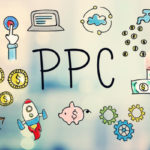The Marketing Plan
All businesses benefit from a solid marketing plan. It should be a vital component within any business plan, particularly a start-up business plan.
A good marketing plan should answer (or at the very least consider) the following questions:
- How is my business, product, service or offering unique?
- Who wants to pay for my product or service; who are my customers?
- What do my existing (and potential) customers really want or need?
- What need do my customers have that my product or service will satisfy?
- Why will customers buy my product, rather than my competitors?
In developing your marketing plan and answering some of the hairy questions above, you should consider: market research; marketing strategies and goals; marketing tactics; and monitoring and controlling. In a nut shell, what you what to achieve, how you will achieve it and how you will improve moving forward. Sounds easy right?
Market research
You are not expected to know absolutely everything about the industry in which your company operates. So, before you develop your marketing strategies and tactics, conduct some market research (or employee a professional to undertake some on your behalf). It will help you identify (and the narrow down) the most promising (and profitable) business opportunities. Spending time and money in the planning phase will save you money later and improve the likelihood of your business succeeding.
Developing marketing strategies
Your marketing strategy should work hand-in-hand with business plan. If it doesn’t, then there is something wrong. Your marketing strategy should build on your broader business objectives and ensure you are going to meet them. A couple of key elements to include in your strategy:
• Positioning: image, benefits and appeal of your product
• Product/service: quality, main elements and special features
• Price: pricing policy including discounts
• Promotion: advertising, PR, direct sales and word of mouth
• Place: where the product will be sold and how it will be delivered to the customer
Marketing tactics
So, know that you have figures out exactly what is it that you are marketing, and who you are going to market it to, you need to decide how you will market it! In today’s fast-paced, digital age, there is a plethora of marketing methods available: media including television, ewspapers, magazines and radio; letterbox drops; email blasts; and the internet –your own website, online advertising or social media. But one of the best ways to promote a business is by word of mouth.The main thing to identify is what the best vehicle of communication is for your customers (or potential customers). There is no point using social media if you need to reach 70 years olds or talkback radio to reach 16 year olds. Determine who your target audience is and how they find out about new products.
Monitoring and controlling marketing
Marketing costs money. A marketing budget should therefore be including in your marketing plan. Measuring the results and return on investment of marketing activities can help in the reallocation of funds next time round to maximise marketing results. If your online advertising campaign only resulted in two sales, but your social media campaign generated 200, imagine if you put all your online advertising budget into social media next time? You might be able to retire by lunchtime. Monitoring the results of your last marketing campaign will help improve your next one.
Preparing Your Marketing Plan
A marketing plan brings together your business objectives and market factors and identifies the strategies and actions required to achieve your goals. Marketing attracts new (and keeps the old) customers. It is key to the success of any business. Your marketing plan should include four key factors, known as the 4 Ps of marketing:
- product
- price
- promotion
- place (also known as distribution)
Key components of a marketing plan
Just make sure that you have these seven key components in your marketing plan and you will be off to a good start (unfortunately, we can’t guarantee that it will work, if we could see into the future, we would have won the lottery by now).
1. Objectives
What are the objectives for your marketing plan? What do you want to achieve with your marketing campaign? What do you need to do to make sure you have a competitive edge? Your objectives should be quantifiable and specific. You should be able to answer them with a number. They are easier to manage and monitor that way. If your objective is ‘To get more customers’, how will you know when this is achieved? Instead, try something like, ‘To increase our customer base from 100 to 250 over the next 6 months’.
2. Definition of Your Target Market
Market segmentation is the process of dividing the total (potential) market into separate, smaller groups. Groups can be divided based on geography, demographics or psychographics (lifestyle and personality). Then, once you’ve done this, develop a different, targeted marketing campaign for each market segment. Tailor campaigns based on age, lifestyle and geographic differentiators.
3. Your current market position
Analyse your current market position. Take into account the industry as a whole, your customer base, and your specific products and services.
Industry:
- market size
- current market share
- potential market share
Customers:
- who are they
- why do they use your business
- customer demographics
- how do you communicate with your customers
- how effective is your communication
- what service quality do you provide
- what motivates your customers (price, branding, quality, warranty, service)
Products and services:
- what is it that you sell
- how is your business competitive
- how is your business different to all others
- how do you satisfy your customers
- branding
4. Pricing
Customers will only pay what they think your product or service is worth. If your product is overpriced, they simply won’t buy it. So, before you price anything, have a think about:
- the actual, real benefits you have to offer your customers
- cost of production and distribution
- how your products are better than your competitors
- brand image
- competitors prices
5. Strategies
Develop a specific marketing strategy for each of your products and customer groups. So, if you run a make-up business, your lipsticks will need a different strategy to your mascaras. Similarly, you should have a plan which targets teenagers and another for 50 year women. The differences will be enormous – believe us!
Product strategies: List all your products or services. Then pinpoint where there might be opportunities to introduce better, different or limited edition products. Then, think about the following for each:
- packaging
- branding
- launches
- warranties and guarantees (if necessary)
- a budget for all the items above
Price strategies: Work out your break-even point. Then determine your ideal return on investment. From this, work out what your prices will be. Once you’ve done that, see if you can improve your profit margins at all and work out how you could do this.
Place strategies: Work out how you are going to distribute your products. Will be retail or wholesale or another way entirely? If you are going to have shopfronts, where will they be located? Why? Include a budget for this.
Promotion strategies: include all strategies (even the ones you don’t intend to use and explain why) such as advertising, PR, marketing, social media, promotions and sponsorship. Include a budget for this.
6. Action plan
Your Action Plan should include a list of specific tasks, allocated to specific people with real, actionable deadlines. The briefer the better; a simple table is usually the best bet for an Action Plan. It should create accountability and a results-drive outcome for your business.
7. Monitoring
This section of your marketing plan should outline what elements of your campaign will be monitored, how they will be monitored and which employee will do the monitoring. Set quantifiable, realistic objectives and ensure you have the methods available to measure them.
If you would like more information on marketing plans, guides and downloadable templates we’ve found the Australian Government Business.gov.au website really useful with some great free resources.







